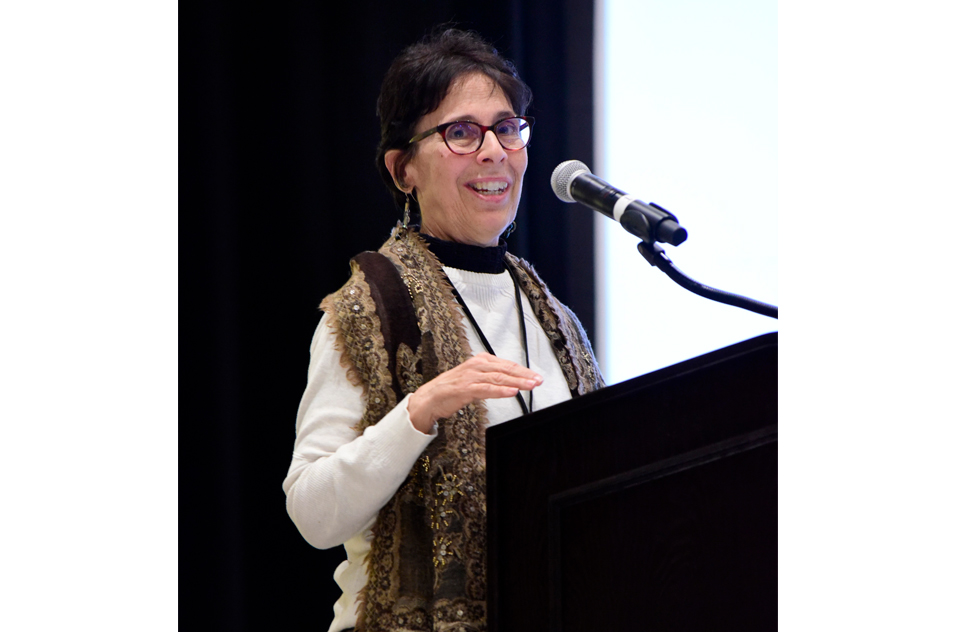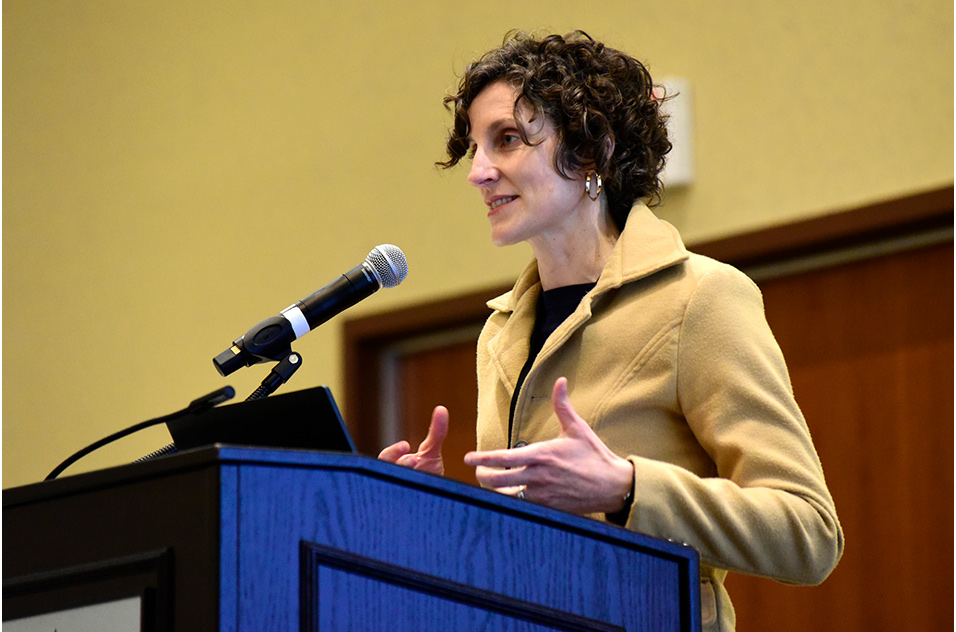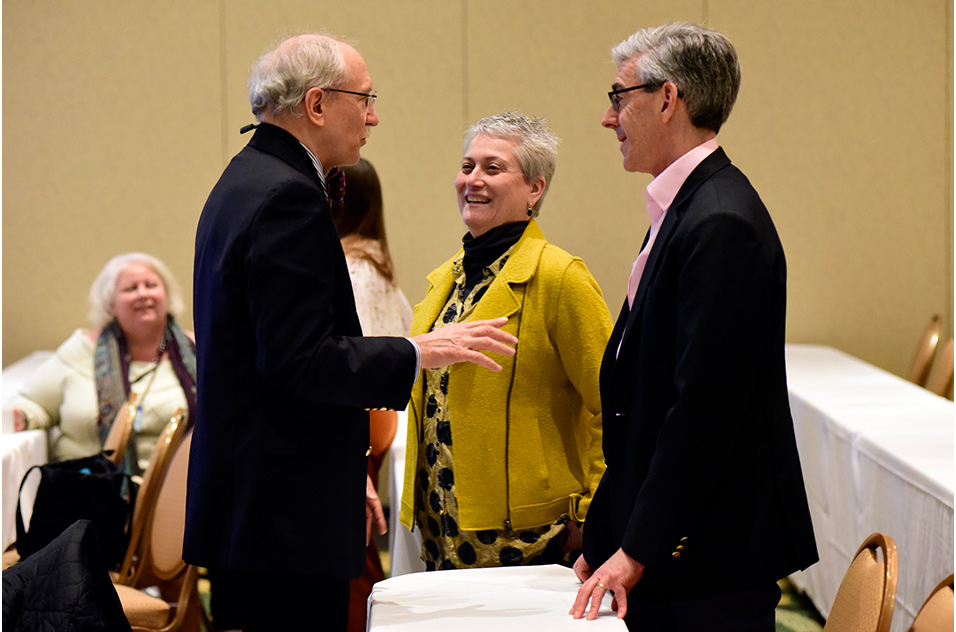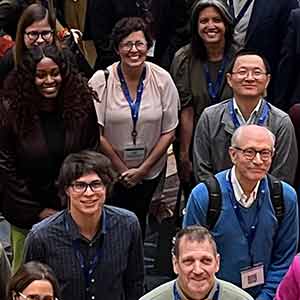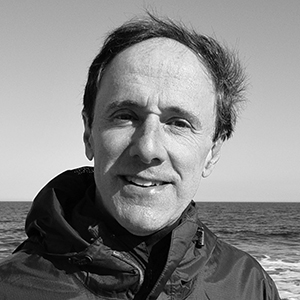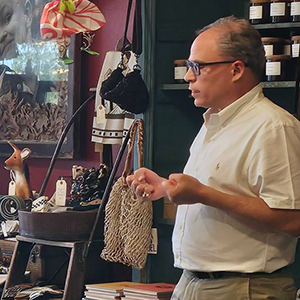Nearly 200 individuals involved with the NIEHS Partnerships for Environmental Public Health (PEPH) met Feb. 12-13 to celebrate the program’s first 10 years and shape its vision for the next decade. PEPH 2020: Past, Present, and Future drew researchers, health advocates, science communicators, educators, policy experts, and public health officials to the Durham Convention Center in Durham, North Carolina.
PEPH helps to turn scientific discovery into action by promoting community engagement and sharing knowledge with diverse stakeholders so they can address environmental health challenges ranging from air pollution to teen vaping. Achieving that aim requires academics, healthcare and public health professionals, residents, and others to work together and respect the skills each brings to a given project, according to PEPH Director Liam O’Fallon.
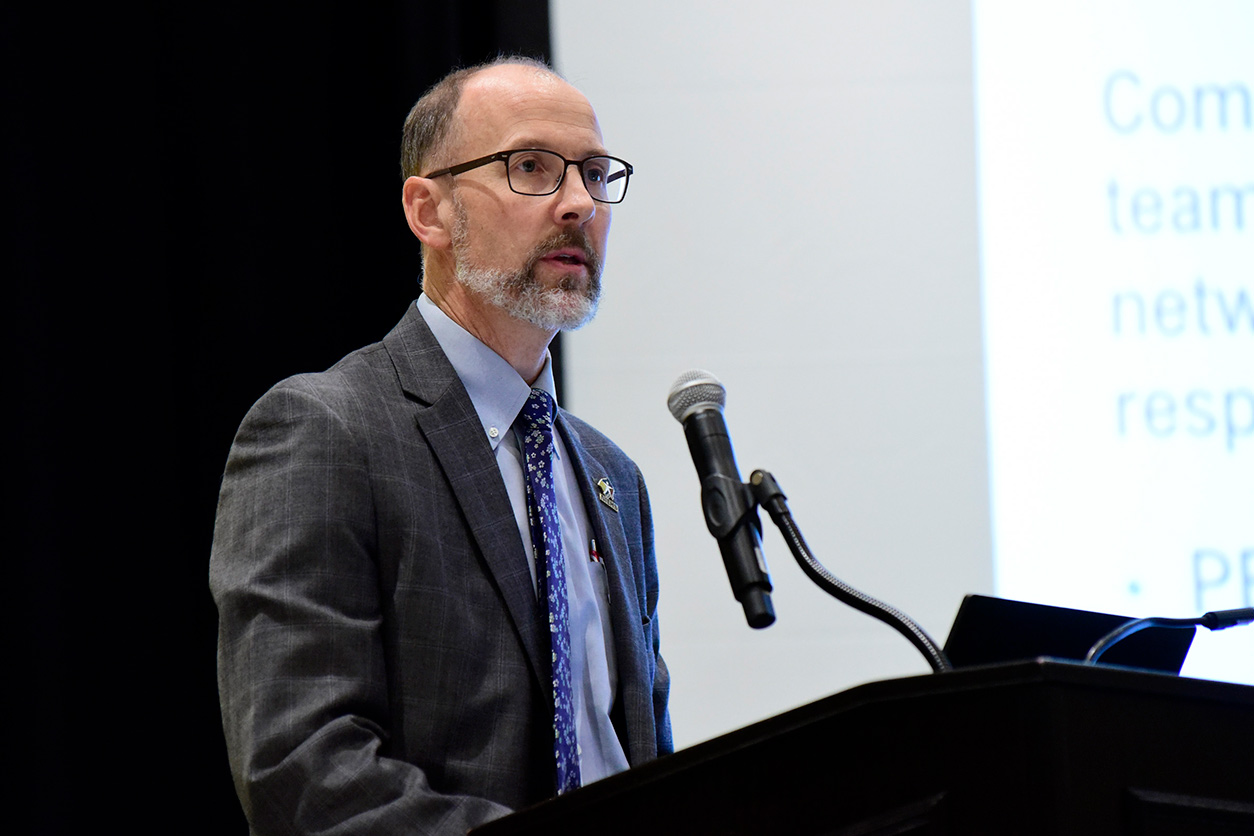 “NIEHS has had a long commitment to science translation,” said O’Fallon, who noted that the origins of PEPH trace back to brainstorming sessions in the late 1990s. (Photo courtesy of Steve McCaw)
“NIEHS has had a long commitment to science translation,” said O’Fallon, who noted that the origins of PEPH trace back to brainstorming sessions in the late 1990s. (Photo courtesy of Steve McCaw)An idea springs to life
“Around 2007, we saw that NIEHS had about 10 or 12 different programs doing similar things, whether involving our Environmental Health Sciences Core Centers, breast cancer program, Worker Training Program, Superfund Research Program, environmental justice work, or science education and training programs,” O'Fallon said.
“We had a lot going on, but we weren’t bringing those different grant programs together to share their collective knowledge,” he added. So O’Fallon worked with a team to help grant recipients share ideas across disciplines and increase community collaboration. The network held its first meeting in 2010.
Science informs education, outreach
“Your work is integral to our strategic plan,” NIEHS and National Toxicology Program (NTP) Acting Director Rick Woychik, Ph.D., told the audience. He explained that a major theme of that plan, Promoting Translation — Data to Knowledge to Action, aligns with PEPH. “This is not just about publishing interesting science in high-profile journals, but also about improving public health and improving people’s lives,” Woychik said.
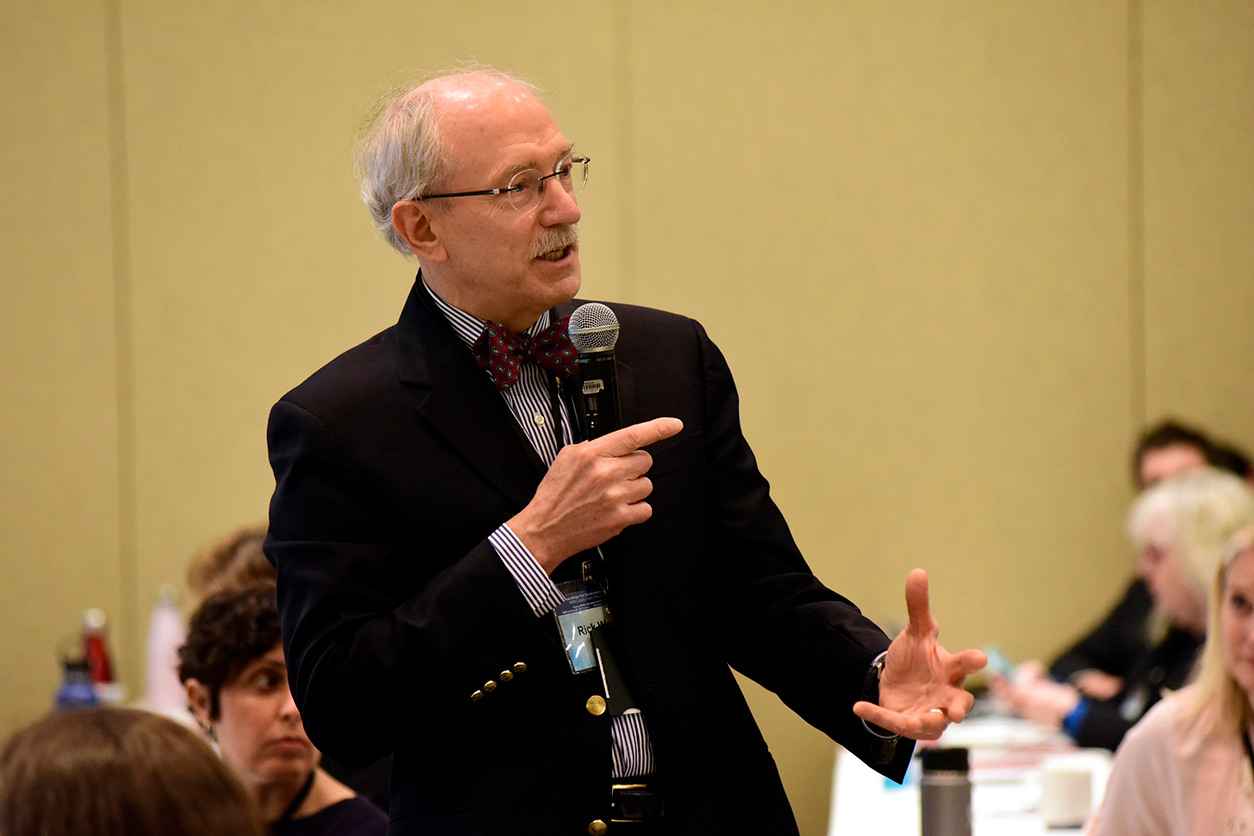 Woychik responded to participants’ comments and suggestions during a listening session. (Photo courtesy of Steve McCaw)
Woychik responded to participants’ comments and suggestions during a listening session. (Photo courtesy of Steve McCaw)PEPH highlights grantees who make real-world impacts. Examples include development of educational activities(https://www.niehs.nih.gov/research/supported/translational/peph/grantee-highlights/2015/#a751237) to teach young students how to avoid harmful substances such as lead and efforts to help pediatricians better understand links between the environment and children’s health. O’Fallon pointed out further ways that PEPH shares information with researchers and the public.
- Monthly newsletter.
- Environmental Health Chat Podcast Series.
- Resource Center for grantees.
- Webinars.
- Twitter and LinkedIn pages.
Increasing knowledge, reducing disparities
Workshops, panels, and poster presentations spurred ideas and debate, provided networking opportunities, and displayed the breadth of PEPH initiatives.
Some participants discussed work to increase scientific literacy and help disadvantaged communities use low-cost technology to monitor pollution. Others described their efforts to reduce environmental health disparities. More than 50 posters were shared in the poster session.
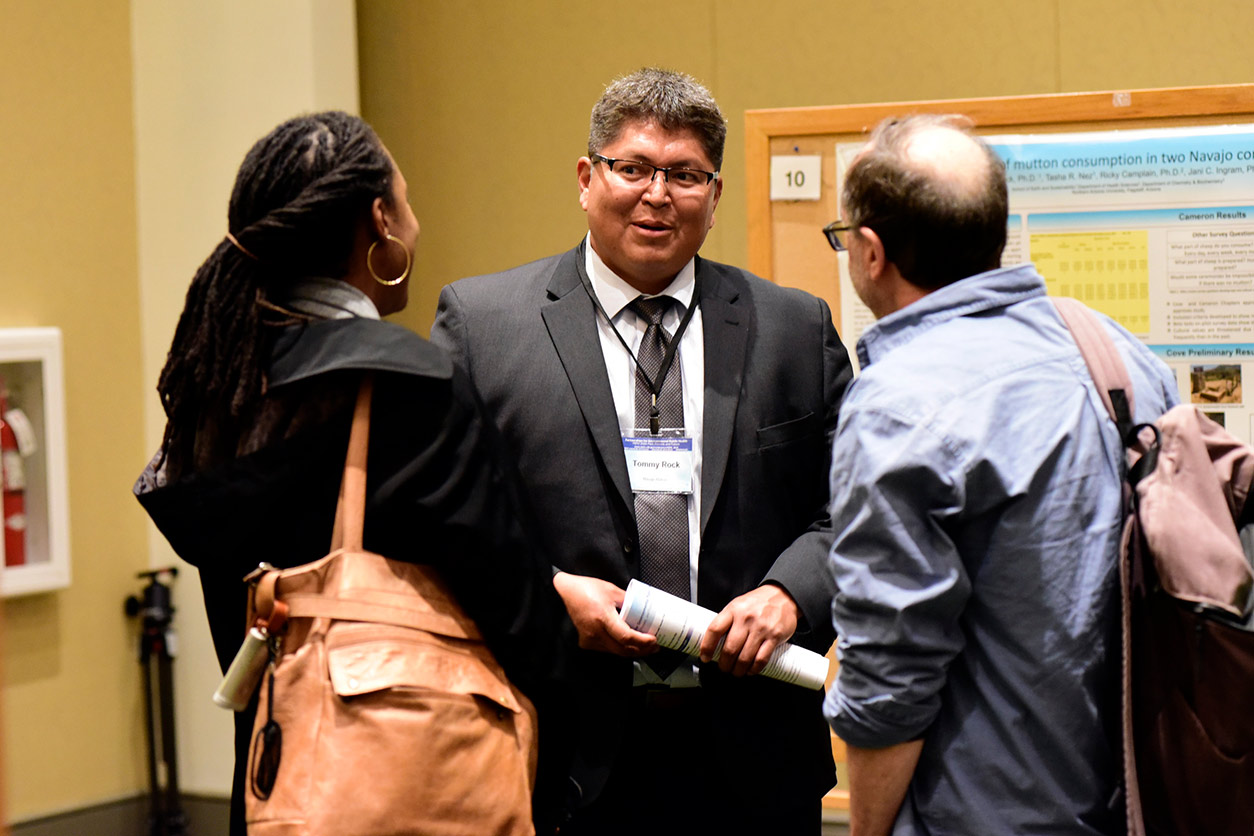 NIEHS grant recipient Tommy Rock, Ph.D., of Northern Arizona University, discussed his study of uranium contamination near Navajo communities. (Photo courtesy of Steve McCaw)
NIEHS grant recipient Tommy Rock, Ph.D., of Northern Arizona University, discussed his study of uranium contamination near Navajo communities. (Photo courtesy of Steve McCaw)Planning for the next 10 years
Even as attendees celebrated progress, they also brainstormed opportunities for improvement. In plenary sessions and breakout groups, they tackled issues such as how to study new industrial chemicals, how to communicate potential health risks without causing undue alarm, and how to forge more community partnerships.
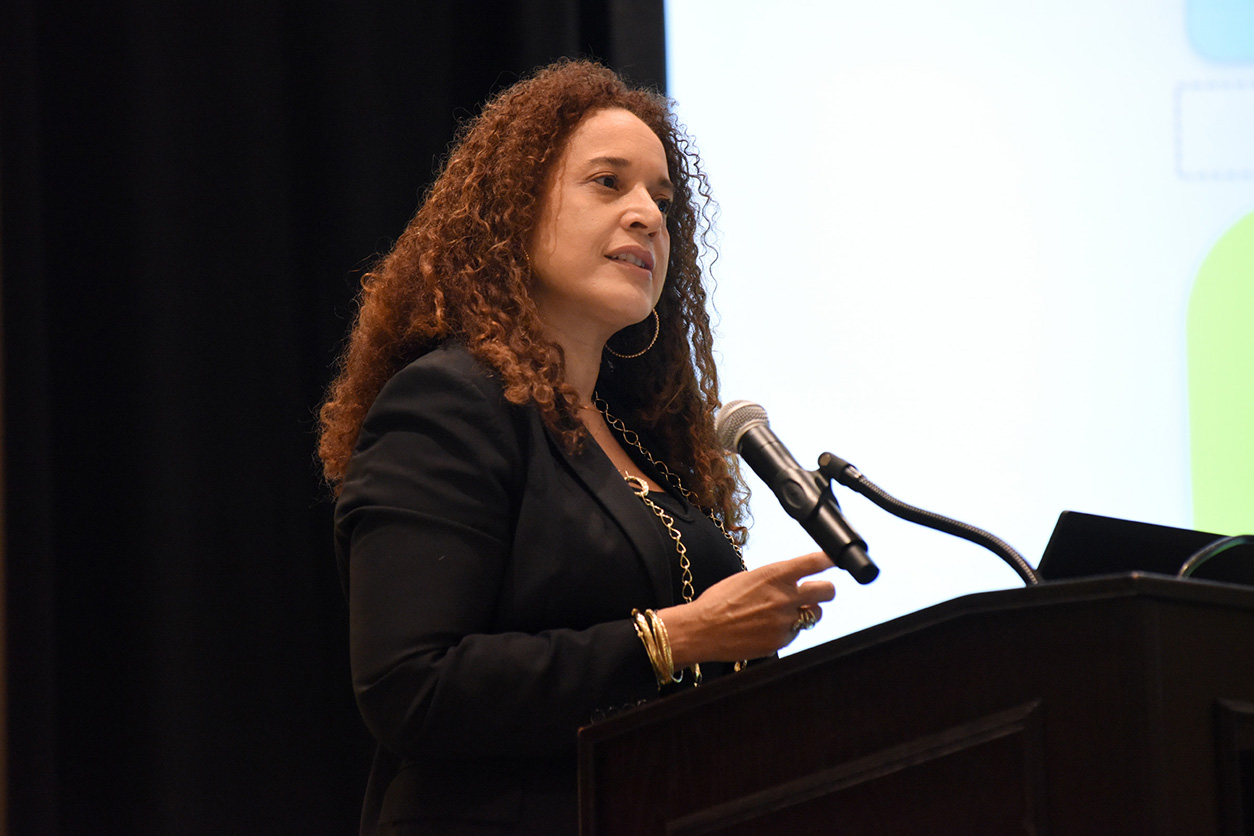 “The knowledge that a community has is as important as the knowledge that you have as a researcher,” said Beverly Watkins, Ph.D., from New York University. (Photo courtesy of Steve McCaw)
“The knowledge that a community has is as important as the knowledge that you have as a researcher,” said Beverly Watkins, Ph.D., from New York University. (Photo courtesy of Steve McCaw)Jane Hoppin, Sc.D., from NCSU, led a session on exposure science that drew attention to the exposome, which is shorthand for all of the environmental exposures a person experiences (see podcast in sidebar). Participants agreed that more research in that area is needed.
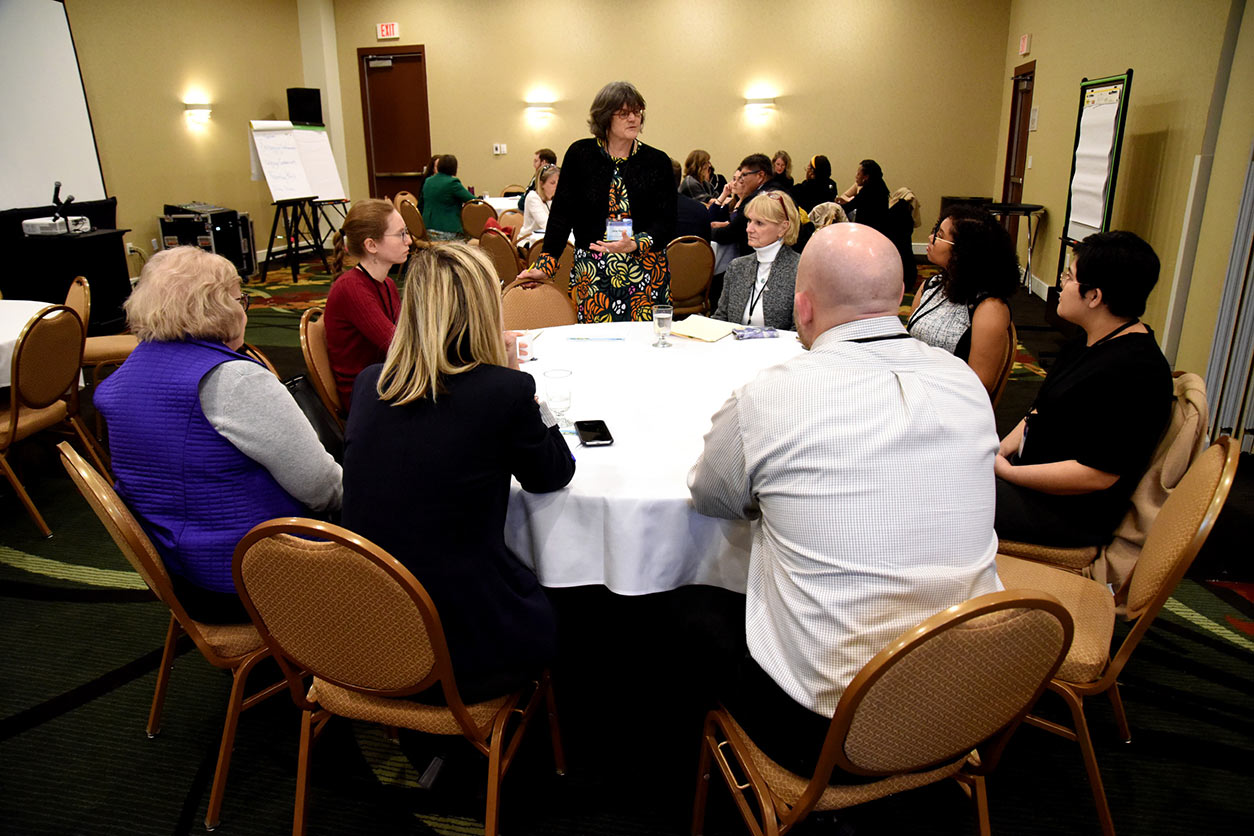 Hoppin, standing, is deputy director of the NIEHS-funded Center for Human Health and the Environment at NCSU. (Photo courtesy of Steve McCaw)
Hoppin, standing, is deputy director of the NIEHS-funded Center for Human Health and the Environment at NCSU. (Photo courtesy of Steve McCaw)Other ideas from the two-day meeting include the following.
- Use knowledge of anthropologists, urban planners, industry experts, and others.
- Better train community organizations on research and researchers on community engagement.
- Use economic studies to show costs of health outcomes caused by exposure to toxic agents.
- Expand environmental health education in medical school.
- Increase use of social media to share key information with the public.
“I think we are unique among the NIH [National Institutes of Health] institutes for placing an enormous priority on translation, and this program really helps us to get there,” NIEHS Acting Deputy Director Gwen Collman, Ph.D., told the audience.
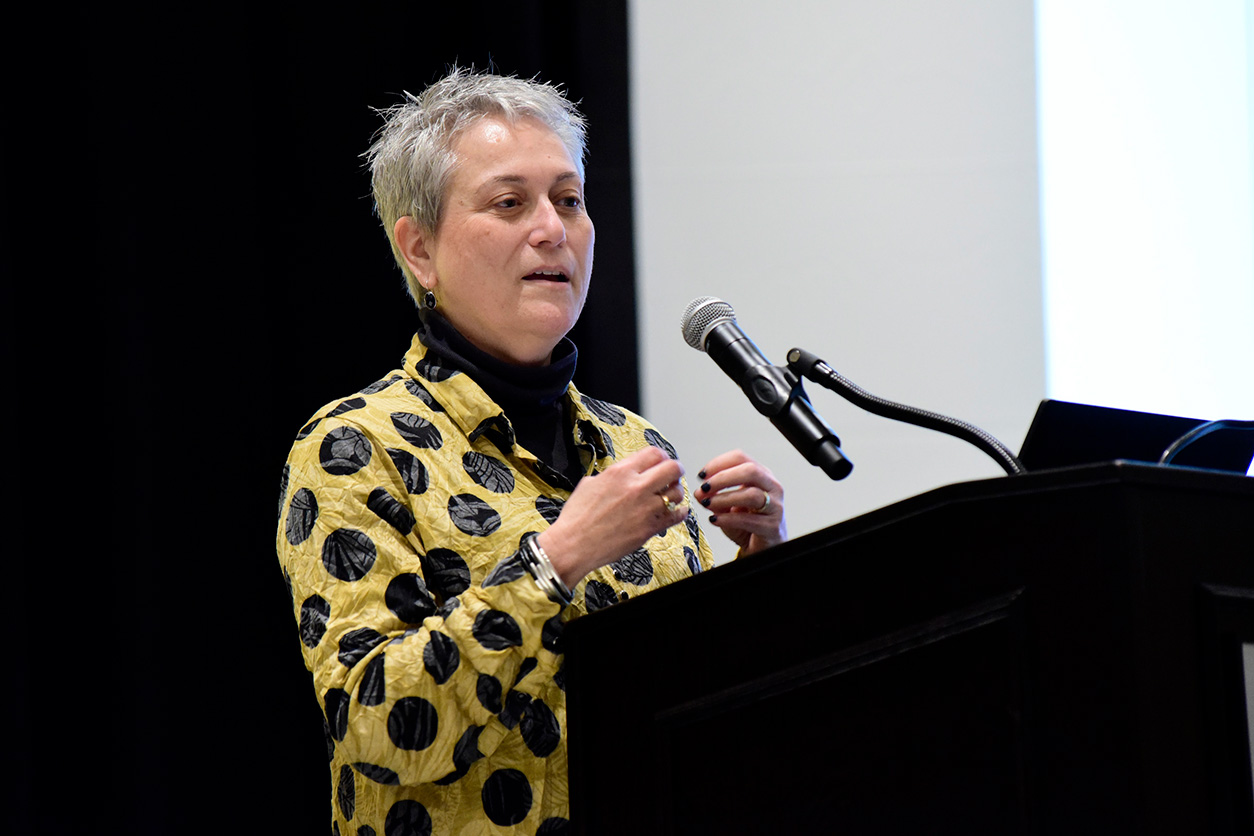 “PEPH couldn’t have a better leader,” said Collman, referring to O’Fallon. (Photo courtesy of Steve McCaw)
“PEPH couldn’t have a better leader,” said Collman, referring to O’Fallon. (Photo courtesy of Steve McCaw)“This network is vibrant. It is a living program — it changes because there are emerging environmental concerns,” she said.
(Jesse Saffron, J.D., is a technical writer-editor in the NIEHS Office of Communications and Public Liaison.)





